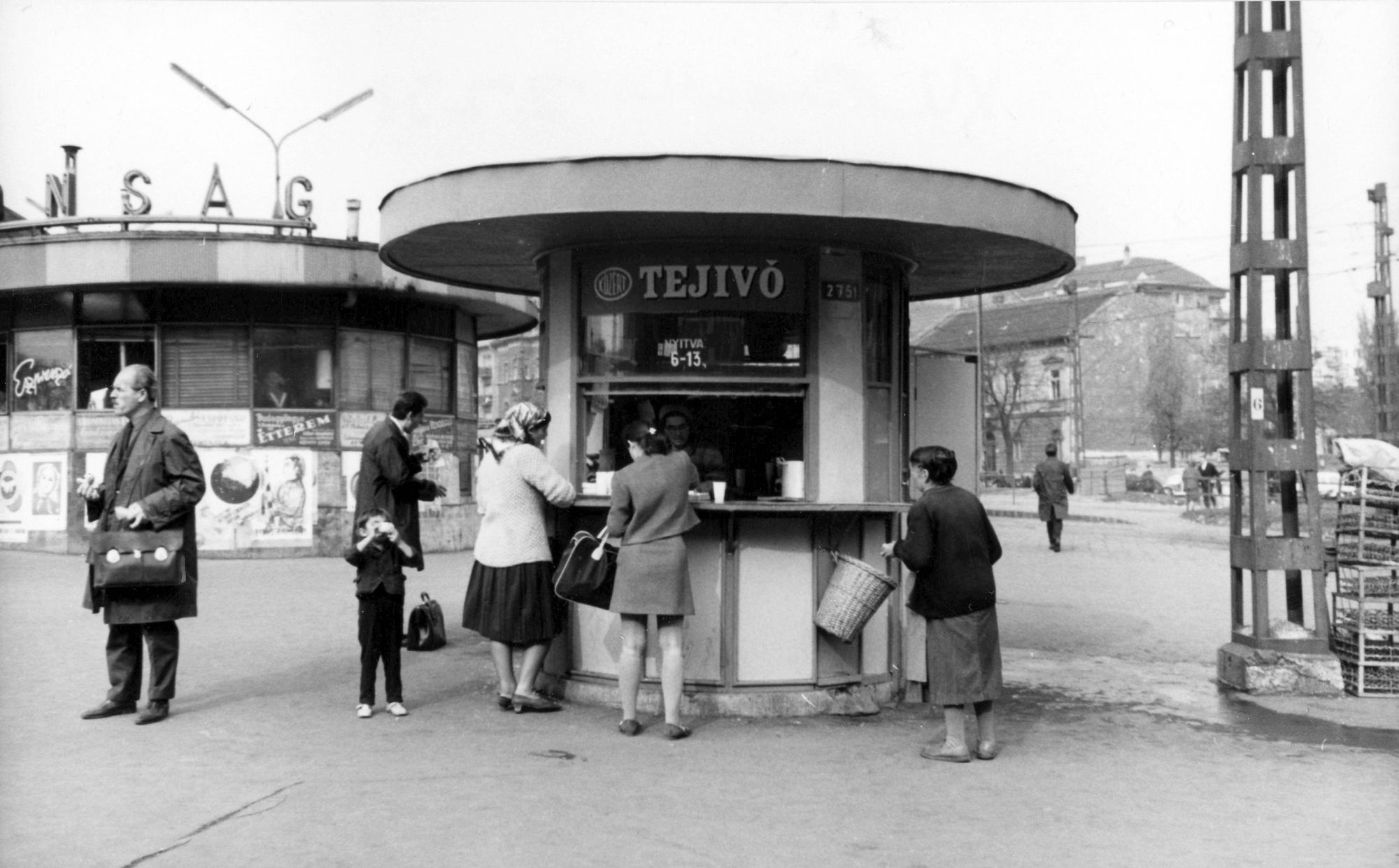Cocoa, milk, rice pudding, milkshake, but even deviled eggs, ham roll-ups, and jellied tongues were awaiting customers in the display cabinet of milk bistros. The milk bars also referred to as “the grocery store of the penniless” were brought to life to promote modern and healthy eating, and become widely popular amongst city dwellers during the Socialist era.
Bar mleczny
The milk bars offering milk and various dairy products flourished in the sixties and seventies, but there was already a milk buffet in 1952 at the corner of Nyugati tér and Szent István körút in Budapest, what’s more, milk bars and milk halls already existed in Budapest at the turn of the 19th and 20th century. However, it wasn’t us, but our Polish friends who invented the milk buffets: the first milk bar („bar mleczny”) was opened in Warsaw in 1896 under the name “Mleczarnia Nadświdrzańska” and, if we are correct, it still operates today.
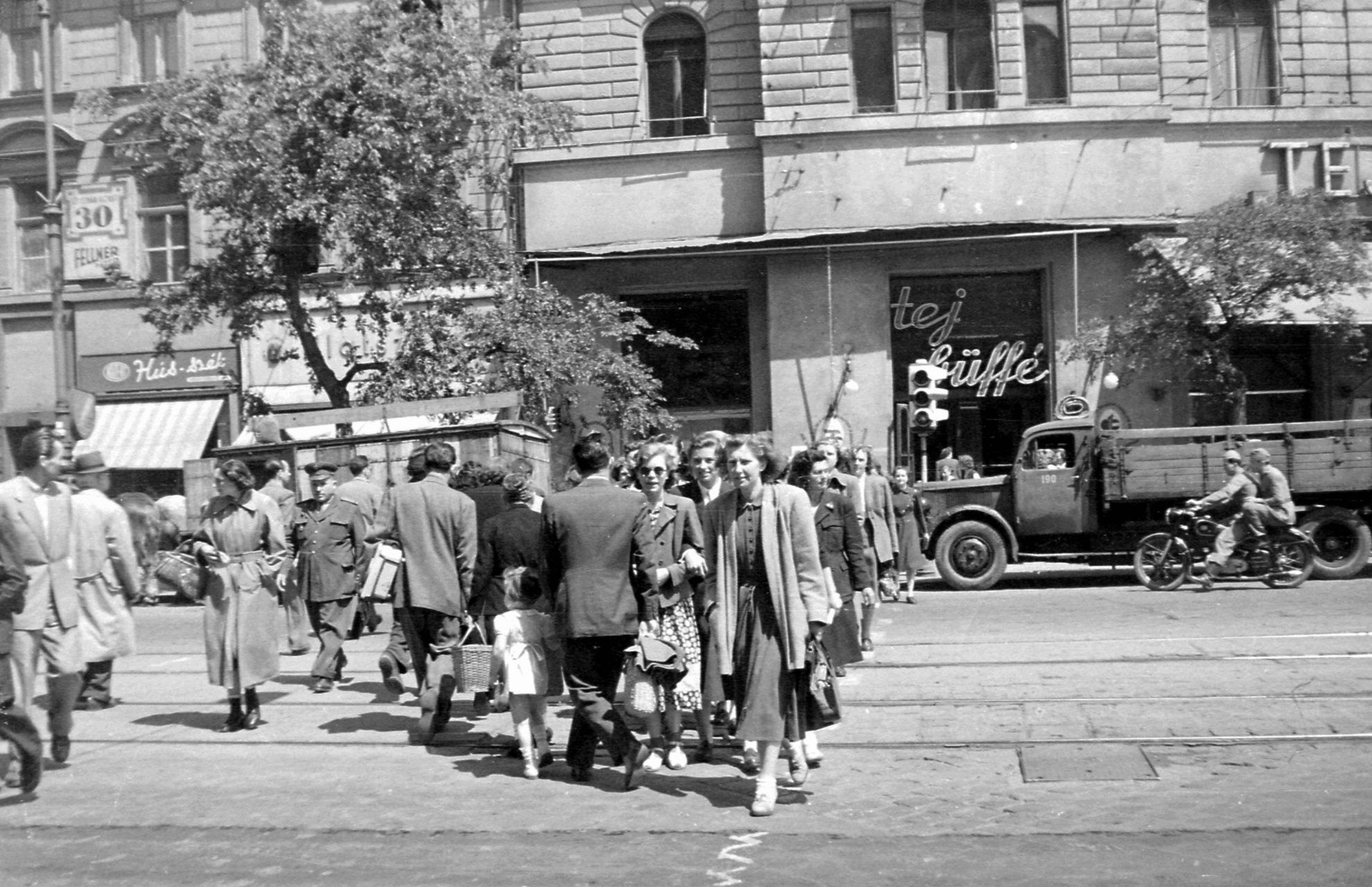
„Egy pohár tej, tiszta fej”
The establishment of the catering units encouraging milk consumption, claimed to be modern, had several, mainly economic-social, and, last but not least, health reasons. In the Socialist era, they wanted to make the alcohol-free milk bistros popular amongst people in order to put an end to the rising levels of alcohol consumption on the one hand, and they also strived to call attention to the beneficial physiological effects of drinking milk with various means of propaganda (you shouldn’t miss out the selection prepared by Miklós Vincze in the subject – the Ed.). The popular posters of József Tóth „Füles” displaying the „egy pohár tej, tiszta fej” (a glass of milk, a clear head) slogan and humorous visual language putting túró (similar to quark or cottage cheese) into the spotlight were also made in the 1970s.
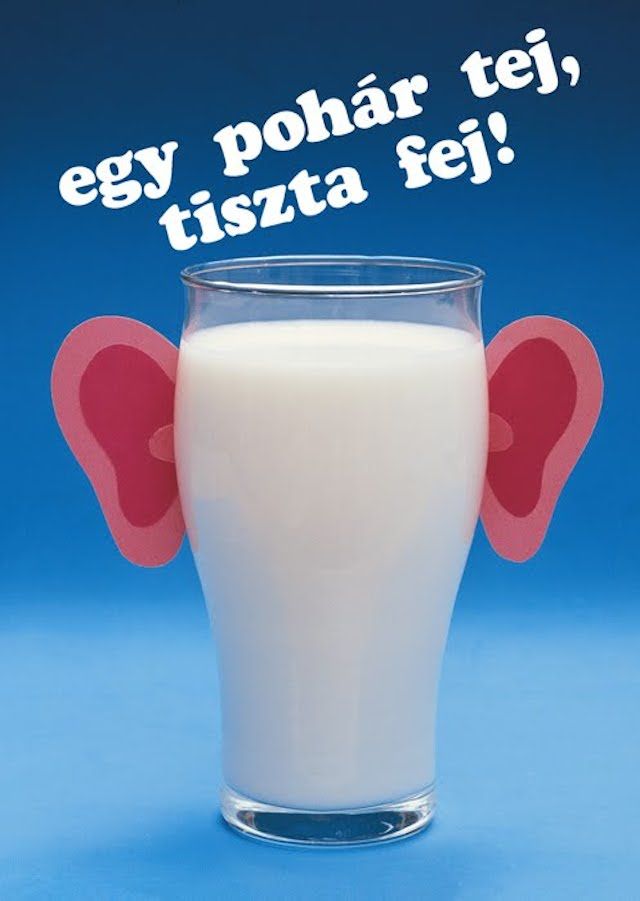
Milk program and GDR blender
The fourth five-year plan (1971-1975) envisaged the increase of cultured hospitality, as a part of which several milk bars were planned to be opened not only in the capital, but in several cities in the countryside, including Sopron, Debrecen and Győr. In spite of the government decree on the development of cattle raising and the growth of the rise of dairies, milk consumption still remained low. “The reason (…) is that those thirsty for milk during the day can hardly access milk in glasses. There are only a few stores suitable for local consumption, offering cultured service” – said the papers in 1973. [1] As a result, the Ministry of Agriculture and Nutrition as well as the Ministry of Domestic Trade developed a joint program for improving sales, this was the so-called milk program, in the framework of which more and more milk bistros opened, partly through altering smaller grocery stores, primarily near factories and new residential districts.
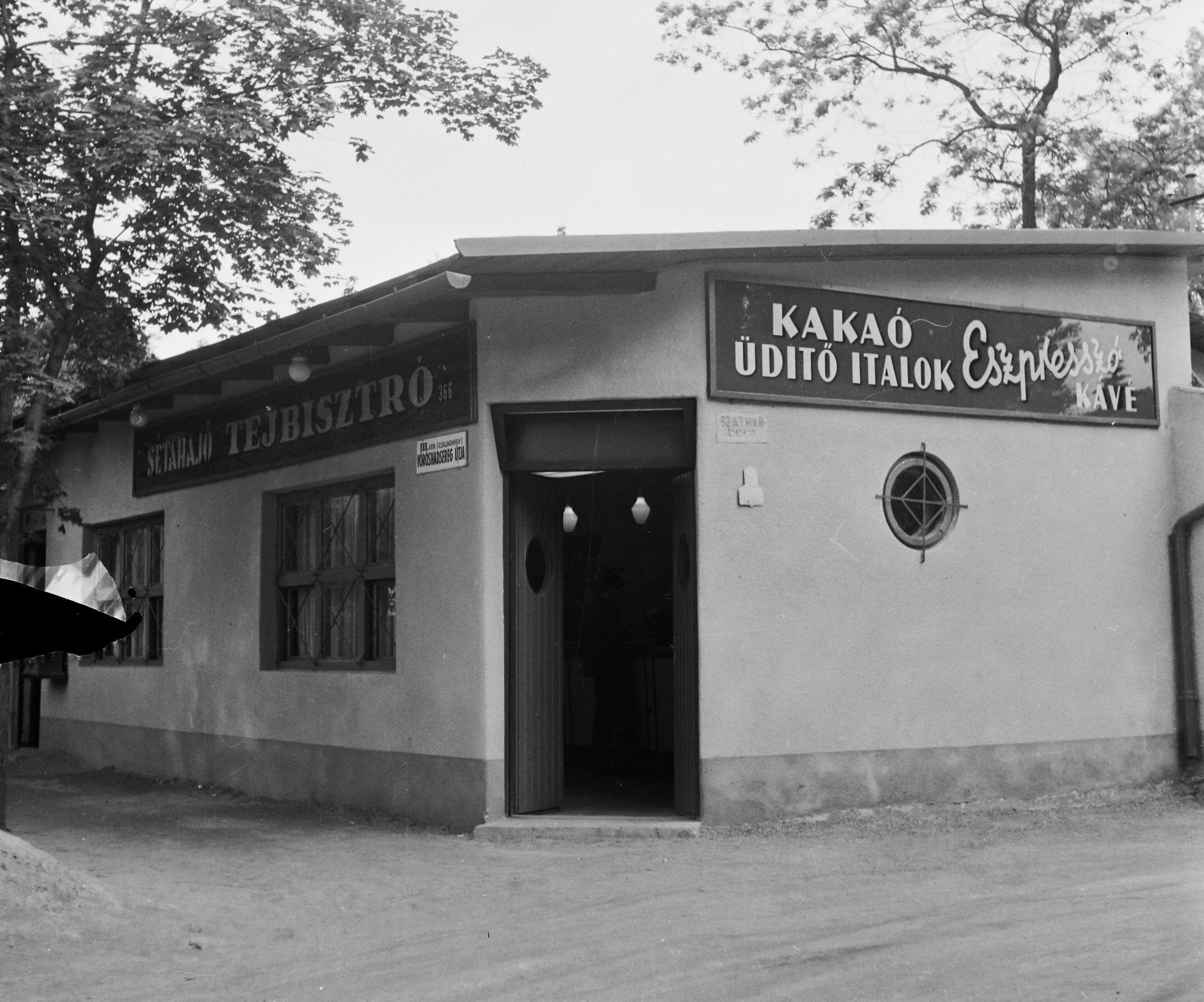
They also announced that these units would once again serve the various shakes, for which the Ministry of Domestic Trade procured 160 machines from the GDR. Only blenders manufactured in the GDR remained for posterity, and primarily the version with a detachable door, owing to András Kern’s classic (previously Index also dedicated a separate article to the machines in the Fortepan column). Based on the resolution of the Budapest City Council, they set the target of establishing almost 500 milk bars and milk bistros.[2]
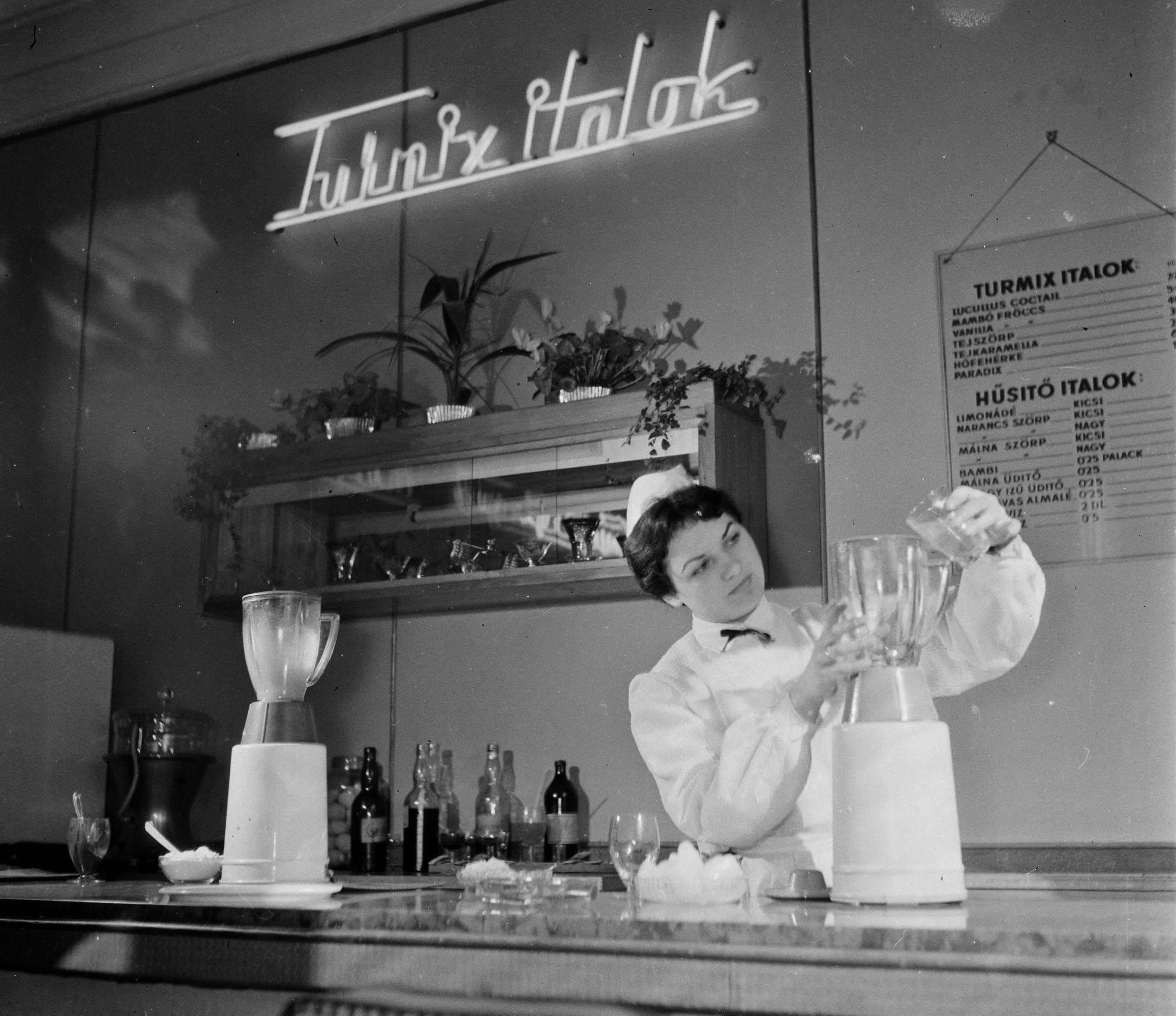
Quark bundles, ham roll-ups, “imbisz”
And what could one treat themselves in milk bistros and bars? In addition to coffee, milk, cocoa, fresh crescents, rolls or quark bundles, various flavors of ice cream and shakes were also available, and similarly to Polish milk bars, guests could also choose from hot meals, ready meals, as well as meat and vegetable dishes. There were also units offering delicacies in the display cabinet, including jellied tongue, goose liver, quail eggs, crab meat, stuffed quail – at least this is what the manager of the milk bistro in Mohács promised to the readers of Dunántúli Napló. [3] Deviled eggs, ham roll-ups, aspic, various salads, cold platters and various types of meat were quite popular. “Imbisz”, which may sound rather odd today (jellied cold food served on small plates – the Ed.) also became popular around this time.
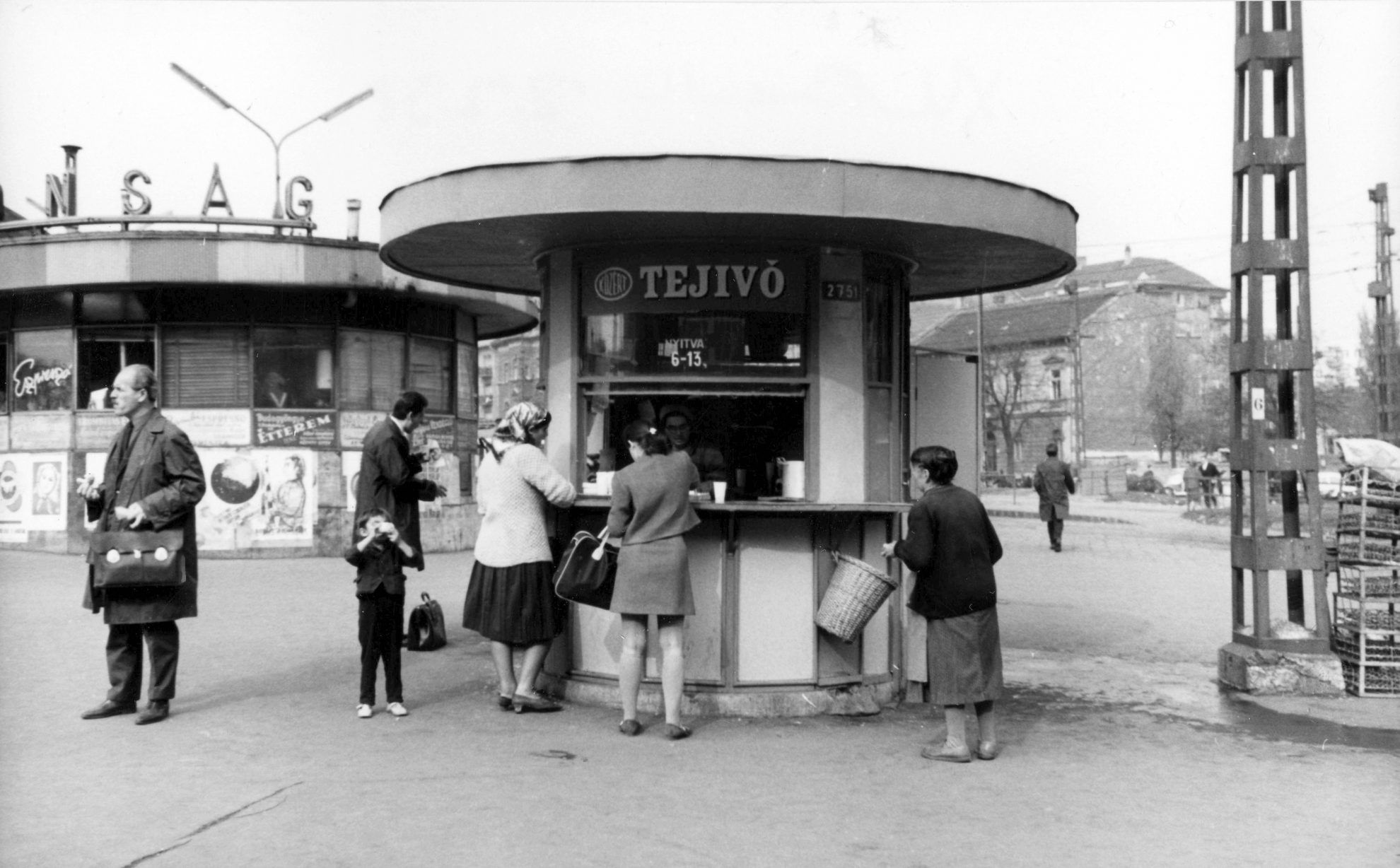
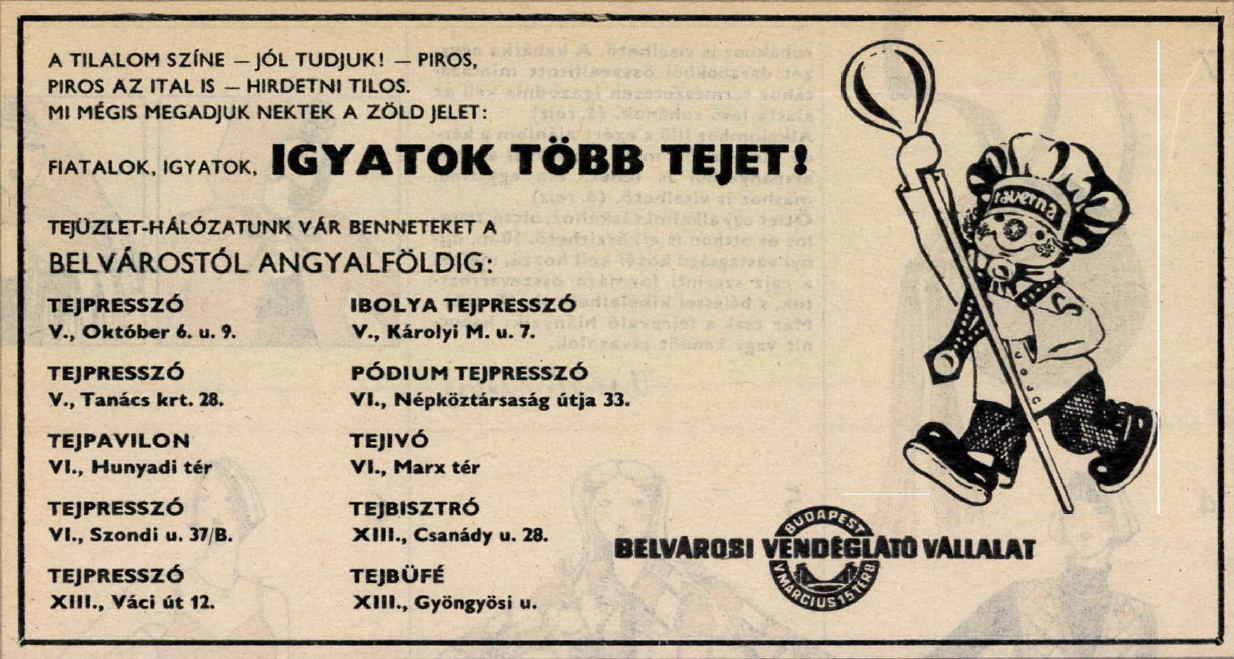
Milk bistros in Budapest
The advertisement of Belvárosi Vendéglátó Vállalat (Inner-City Catering Corporation) tells us the locations of milk catering units: there were smaller milk units (for example near today’s Nyugati Railway Station), milk pavilions (for example the one at Hunyadi tér), there was also a milk shop under today’s Károly körút 28., on the corner, “where you can get ice-cream, cocoa, grilled sandwich, pogácsa, cheese rolls, all in all some really fine meals, which you can wash down with an alcohol-free beverage day and night.” [4] Kis-Lucullus café and milk buffet also operated on the former Tanács körút, under number 5.


In the milk bistro opened in Csanády utca in District XIII, one could also order a squark strudel or cheese stuffed mushrooms in addition to breakfast options.
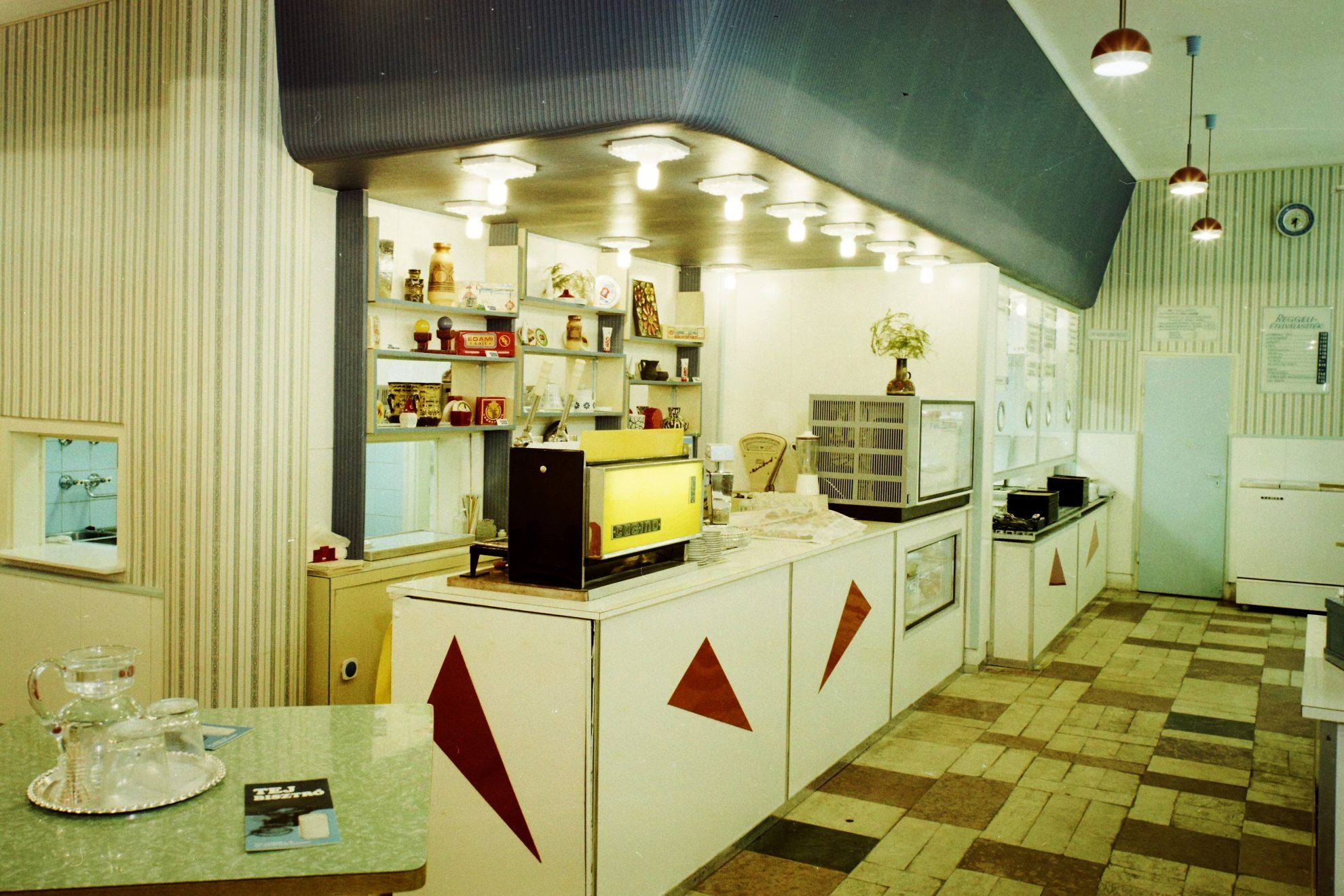
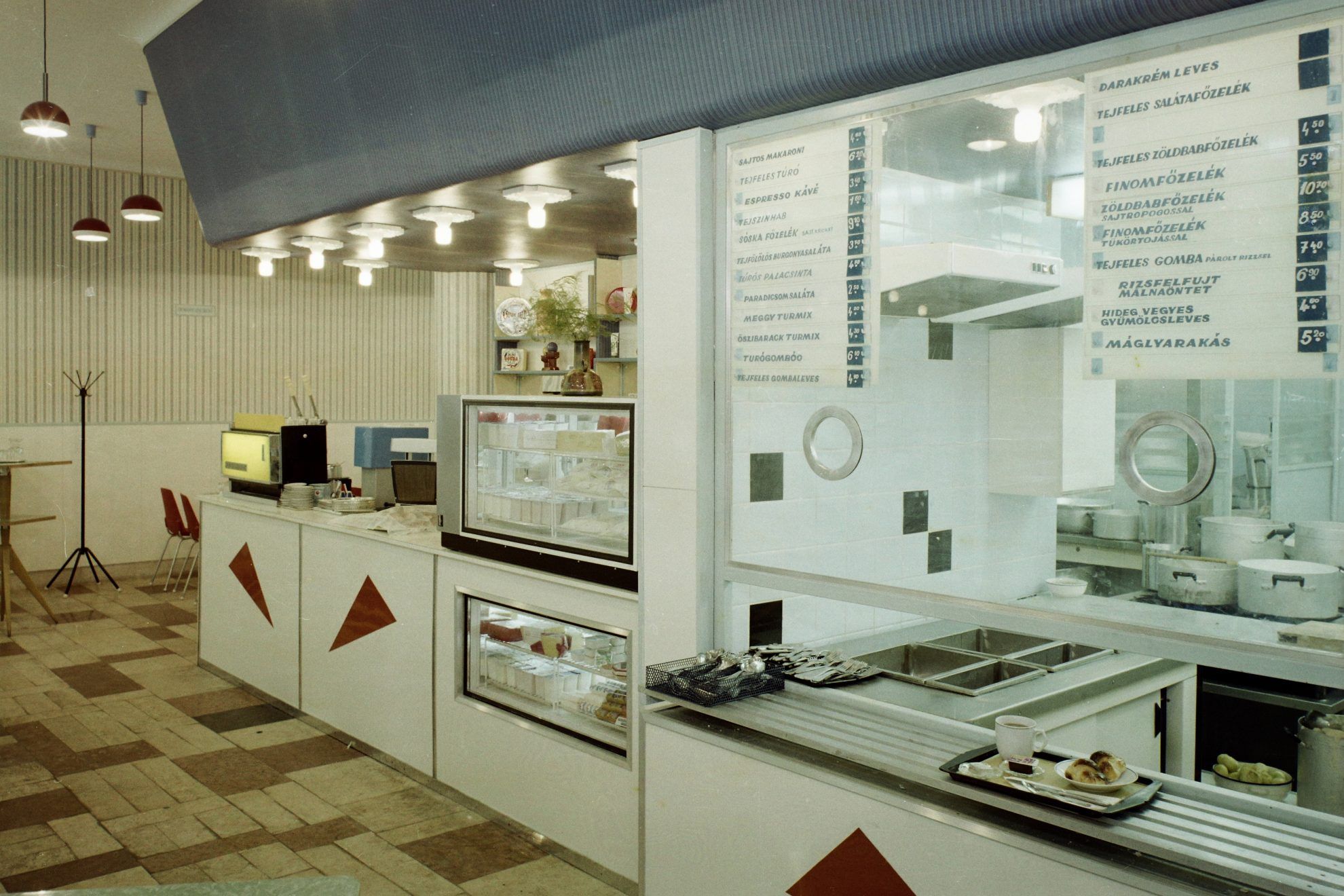
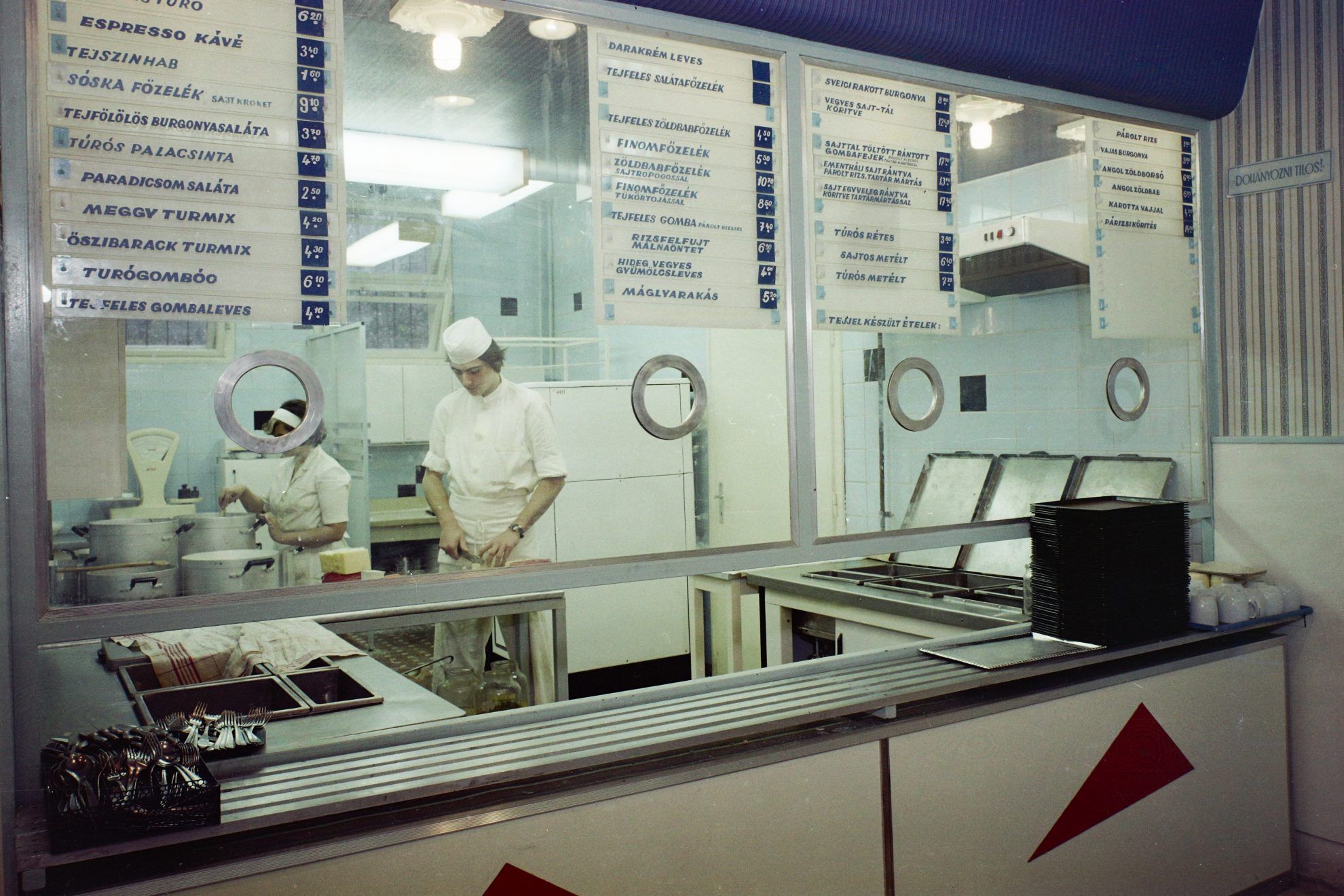
And even though the press of the era refers to milk buffets as the manifestations of the fight against alcoholism, sometimes it happened that the unsuspicious visitors were taken by surprise at these places exactly. The same thing happened to Zsuzsa Gál, the journalist of Népszava, too, when she entered the unit of Belvárosi Vendéglátó Vállalat in Károlyi Mihály utca to have a glass of milk. “And there in the back, in the dark of the milk bar, in dense smoke, there were customers, drinking. What were they drinking? Beer and palinka. Where did the liquor come from? From the part of the counter reaching to the back, of course, on which there were the bottles of rum, cherry, apricot and plum flavor palinka, gin, beer and wine lined up nicely. (…) I’m afraid the downtown milk bar authentically shows the Janus face of our hospitality. There is Rákóczi’s cake and raspberry milkshake in the window, with all kinds of liquor in thick smoke in the background (…)” – she wrote in the paper.[5]
Milk bistros in the countryside
Several pubs were altered in spirit of the fight against alcoholism, so that people would visit these places for milk instead of liquor. This is what happened to the pub in Győr called the “house of lords”, the regulars of which “included the entire underworld of the town.” The pub also referred to as “Mohácsi” changed its profile in 1975 – the “milk bistro special”, that is “túrós csusza” (pasta with quark) and pancakes with jam, was the popular choice of store workers and clerks working nearby. Those setting out for work early in the morning drank warm milk or hot cocoa and ate bundt cake or buns in the winter months, the pensioners and single people rather arrived in the afternoon or early evening, and ordered rice pudding and pastries.[6] But this was not the only milk bar in Győr: “The waiting hall of the railway station in Győr was transformed into a modern milk bar. The milk bar offered fifteen kinds of dairy products, fruit juices, shakes and fresh pastry.”[7]
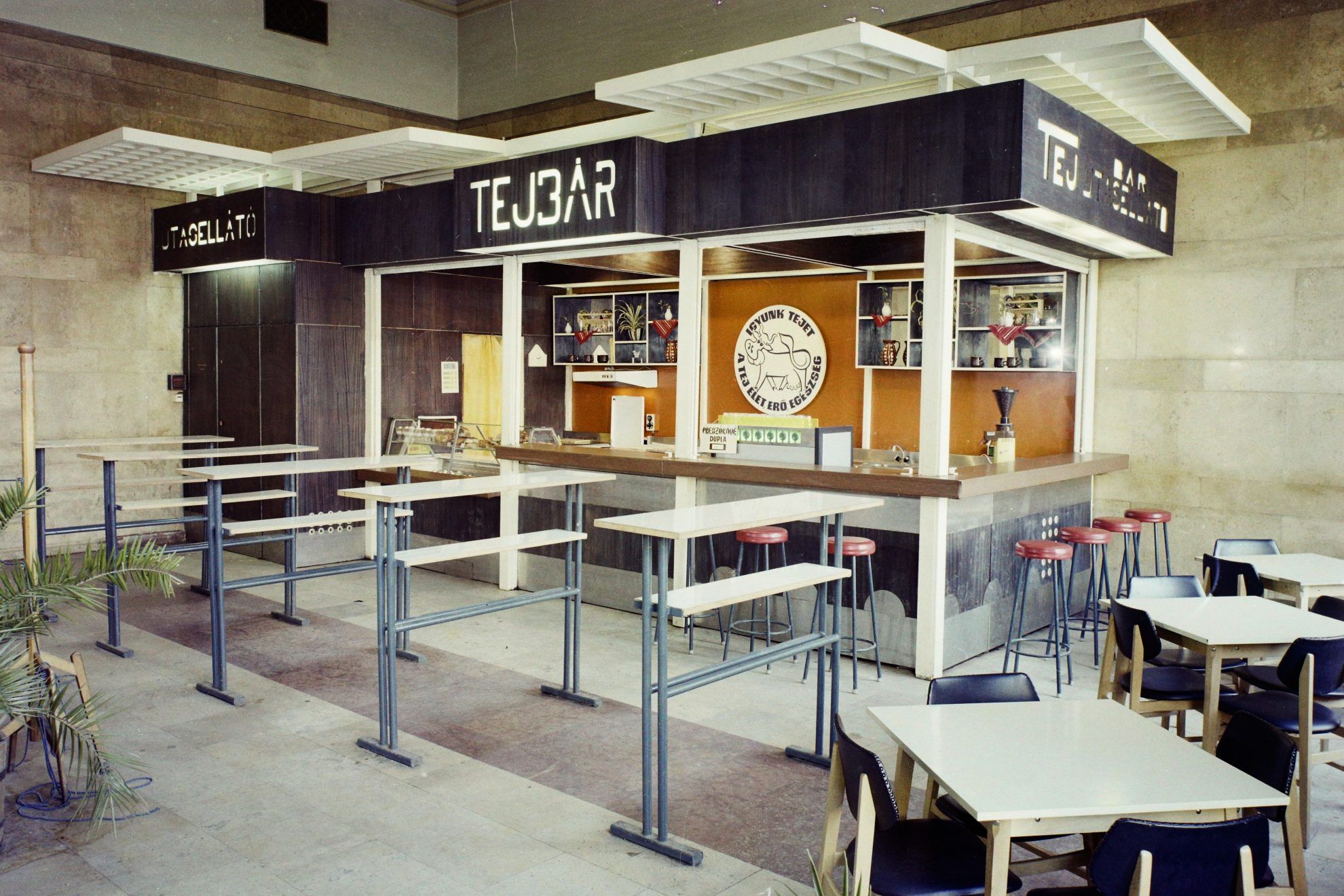
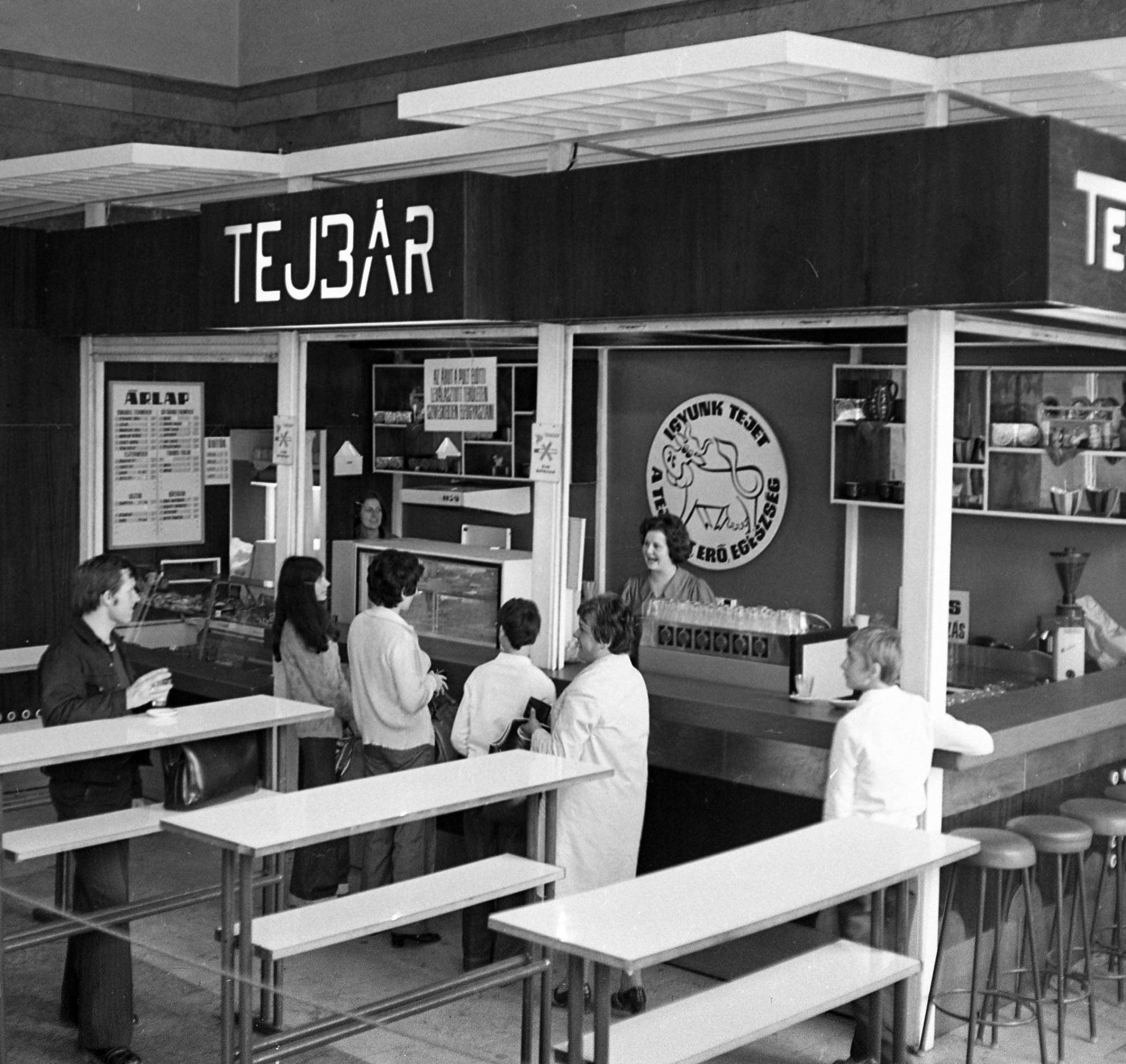
The non-stop milk bar at Debrecen Grand Railway Station was opened on November 4, 1974, from approx. 750,000 Forints. This was the first milk bar installed at a railway station in Hungary.
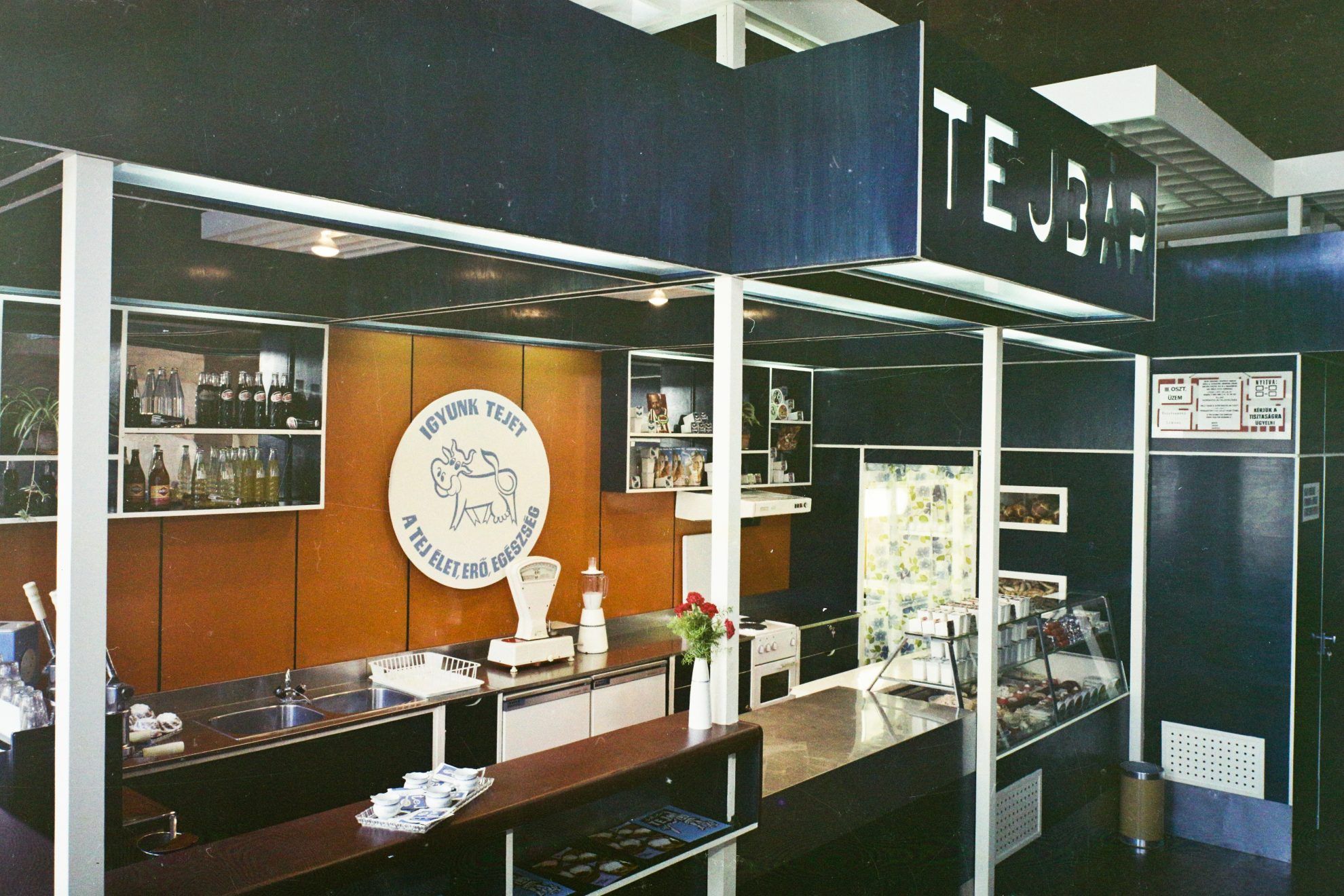

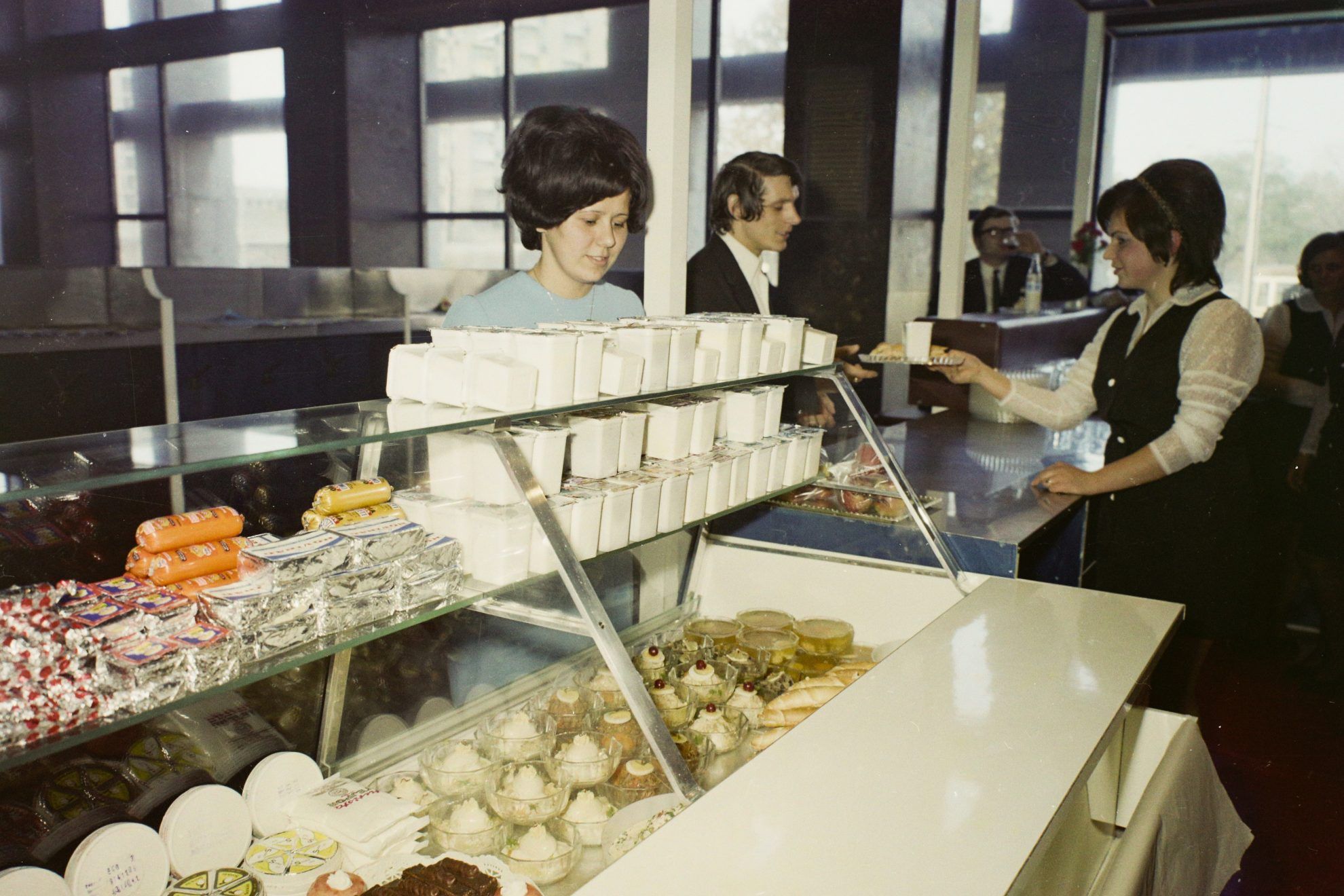
Milk bars, where have you gone?
Even though more and more super-cool breakfast places have opened in the past years, there are hardly any that would invite hungry customers with a truly retro atmosphere. The genre of brunch is much more popular, that is, the unique combination of a breakfast and a lunch, with some new-wave vibe, of course. Cserpes Tejivó is sort of an exception to this rule – it was opened on June 1, 2012, on World Milk Day, in the heart of the Hungarian capital. Cserpes did a good job embedding the retro atmosphere into the modern milieu, and thanks to them, we got used to “rongyos” crescent, milkshakes and frothy hot cocoas again in the past eight years.
Hungarian fashion brand VYF had a central role in saving and preserving the cultural heritage of milk bars: Tamás Szécsi and Viola Balázs debuted their „Bar Mleczny” collection back in 2014, in the framework of the Gombold újra! competition, in which the set tables of milk bars come to life on colorful-funny silk scarfs. We are huge fans!
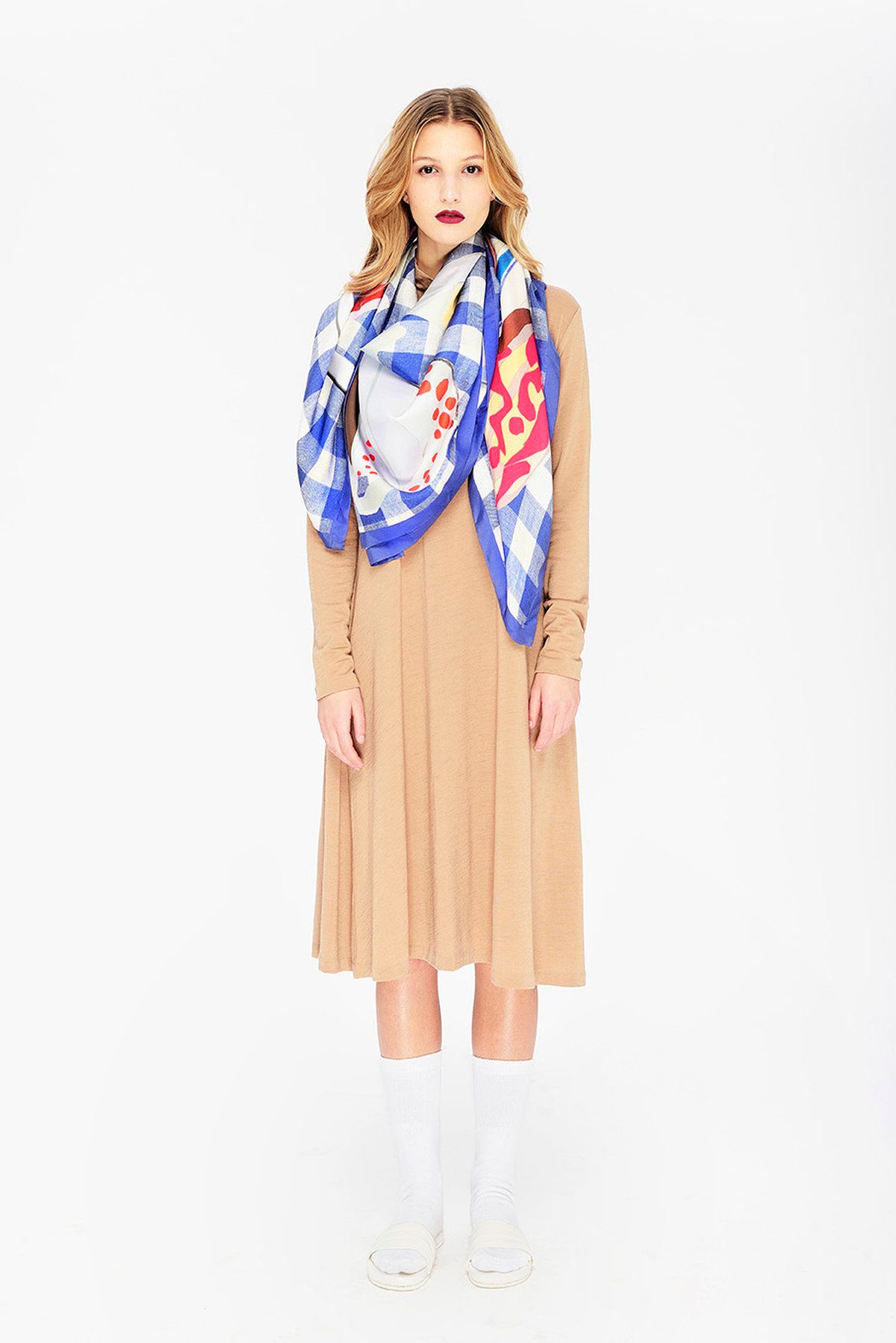

[1] Hétfői Hírek October 15, 1973
[2] Esti Hírlap July 24, 1976, p 3
[3] Dunántúli Napló December 7, 1983, p 5
[4] Magyar Nemzet October 6, 1984, p 4
[5] Népszava May 8, 1976, p 4
[6] Kisalföld February 12, 1987, p 5
[7] Esti Hírlap July 15 1975
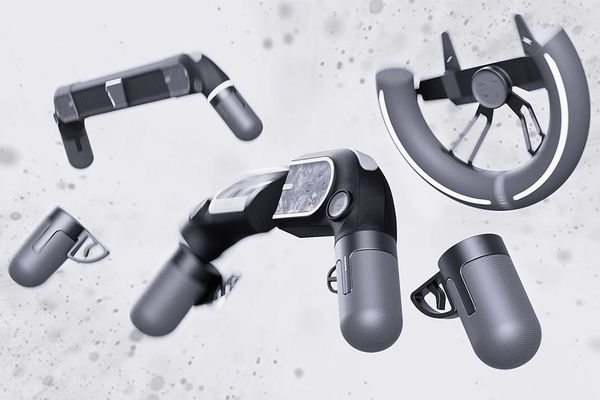
Shape-shifting controller | MORPHOX
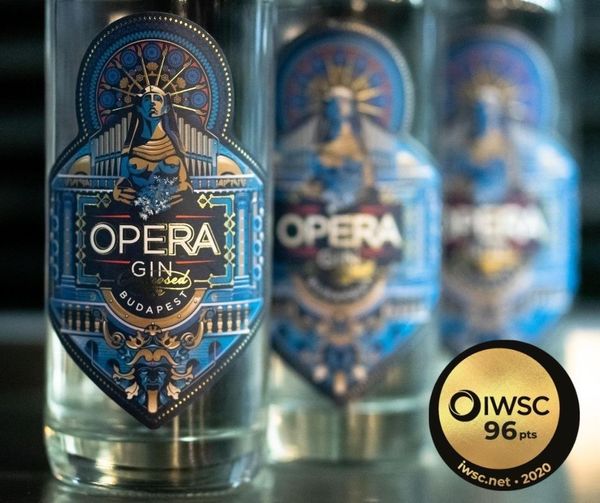
Opera Gin Budapest wins another gold medal










